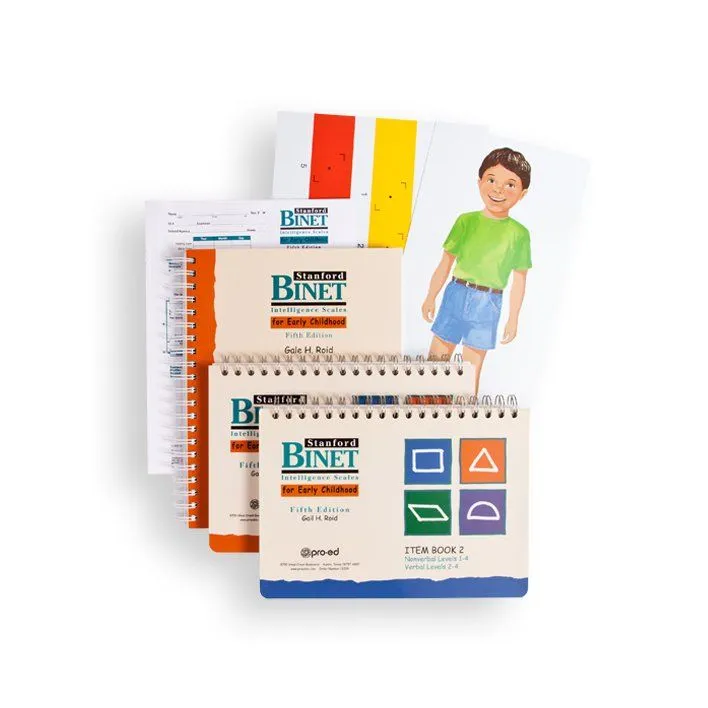(SB-5) Stanford-Binet Intelligence Scales, Fifth Edition
(SB-5) Stanford-Binet Intelligence Scales, Fifth Edition
From $86.00
To $2,741.00
In stock
Sign In to download sample materials.
Don't have an account? Register Here.
About This Product

Safety Warning: CHOKING HAZARD - Small parts. Not for children under 3 years.
Stanford-Binet Intelligence Scales: Fifth Edition (SB-5)(2003)
BY GALE H. ROID, PHD
The standard measure of intelligence since 1916, the Stanford-Binet documents the cognitive strengths and weaknesses of children, adolescents, and adults. Its 10 subtests assess five cognitive factors: Fluid Reasoning; Knowledge; Quantitative; Visual-Spatial; and Working Memory.
The SB-5 remains among the most widely used intelligence tests because it is effective with so many different groups. Its numerous high-end items make it an excellent measure of giftedness. At the same time, improved low-end items make it appropriate for lower functioning individuals. (The Manual introduces an Extended IQ scale that supports calculation of Full Scale IQ scores substantially lower than 40 or higher than 160.) Additionally, child-friendly manipulatives make the SB-5 a popular choice for preschool testing, while the inclusion of memory items supports its use with older people. All SB-5 items have proven unbiased in regard to gender, ethnicity, culture, religion, region, and socioeconomic status.
Three easel-style booklets present items on one side of each page and examiner directions and scoring guidelines on the other. Item Book 1 includes two subtests—Matrices and Vocabulary—that function as an Abbreviated Battery, producing a Brief IQ score that determines the starting point for the remaining subtests. Item Book 2 presents (in order of difficulty) nonverbal subtests, which are especially useful in assessing individuals with limited English proficiency, hearing impairments, learning disabilities, traumatic brain injury, and autism spectrum disorders. And Item Book 3 presents verbal subtests (again in order of difficulty).
The test can be hand or computer scored. The scoring program provides raw score conversion, an extended score report, a graphical report, and a brief narrative summary with interpretive guidelines and suggestions.
Stanford-Binet Intelligence Scales for Early Childhood (Early SB-5)(2005)
Derived directly from the SB-5 (above), this version is streamlined for use with very young children. While it is similar to the SB-5's content, psychometrics, administration, and scoring, the Early SB-5 offers a more focused and less expensive option for clinicians who only assess younger children. It also includes a Test Observation Checklist for documenting behavior during testing and a specialized Parent Report when you opt for computer scoring.
The Early SB-5 covers the full range of abilities for children ages 2 to 5. This version assesses intellectual deficiencies, delays, and disabilities while allowing interventions and child referrals for more extensive pre-academic and neuropsychological evaluations. This evaluation has two subtests that extend to 6 and 7-year-olds; however, it doesn't provide a complete picture. WPS recommends professionals seeking a full intelligence assessment for this age group to use the SB-5.
Terms often used to search for (SB-5) Stanford-Binet Intelligence Scales
Stanford Binet, Stanford Binet IQ test, SB5, Stanford Binet intelligence scales, report, score chart, psychology, test





